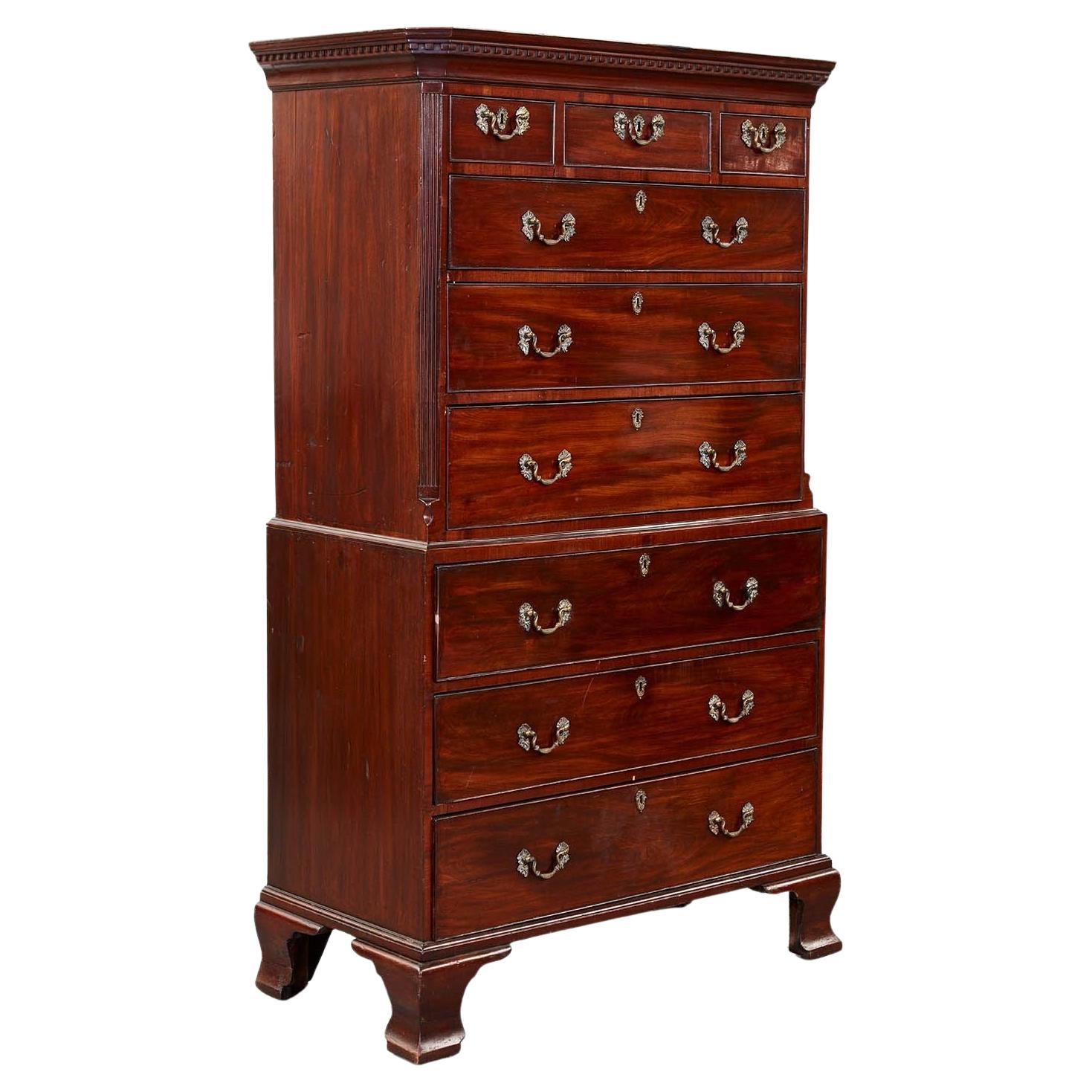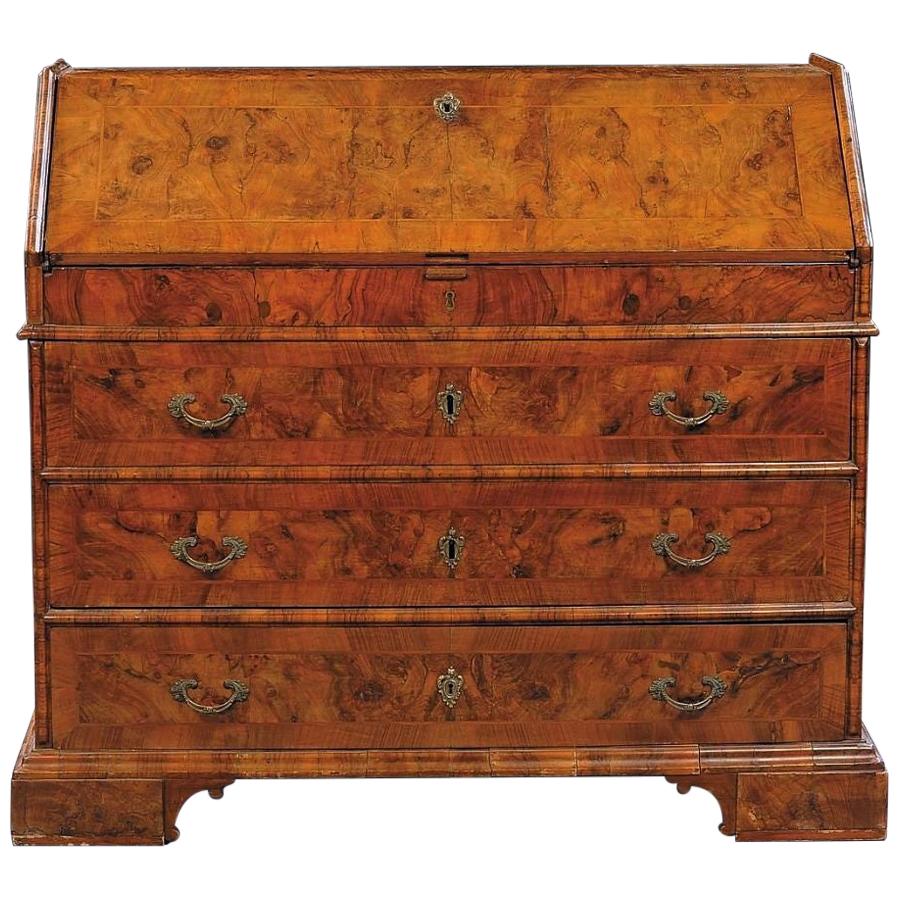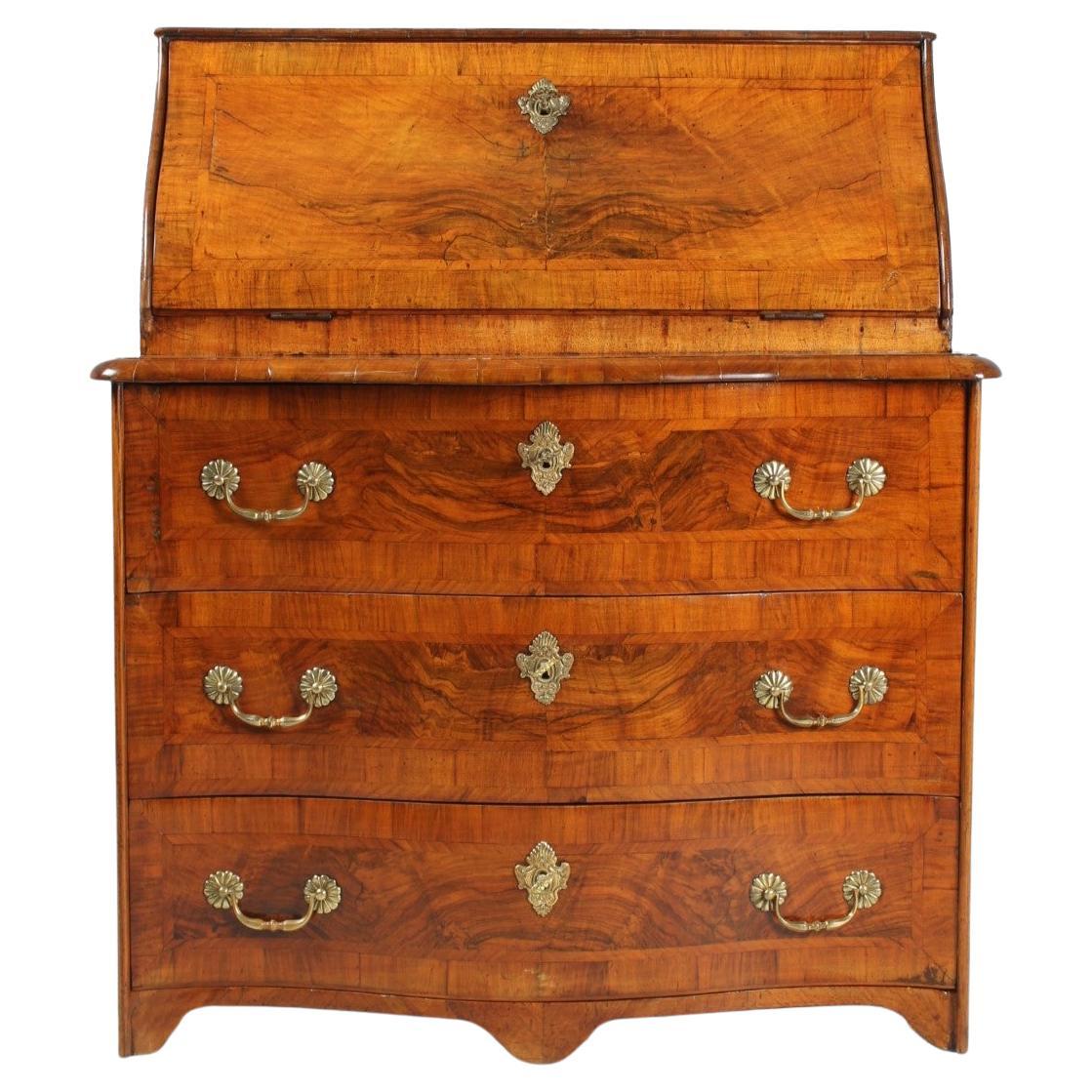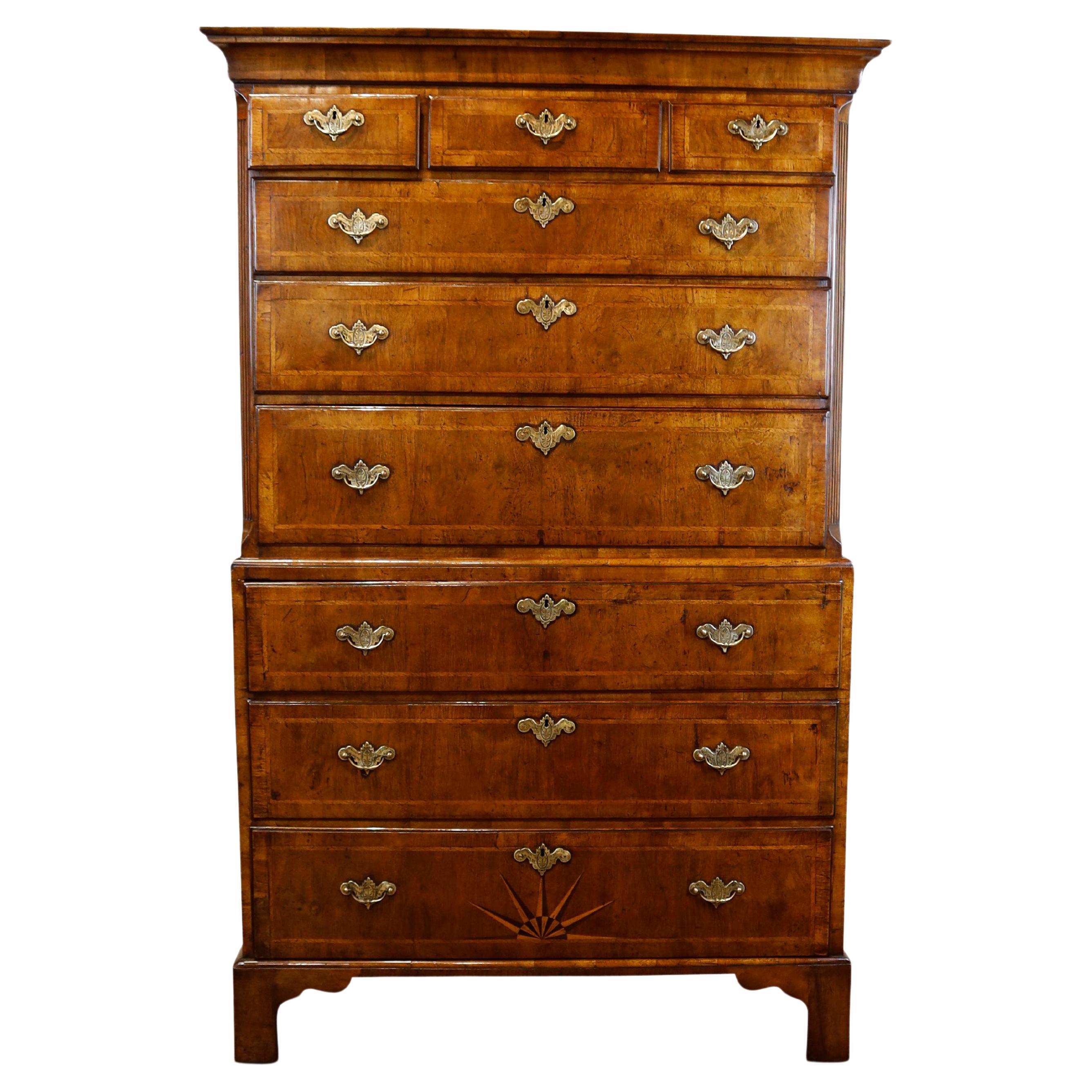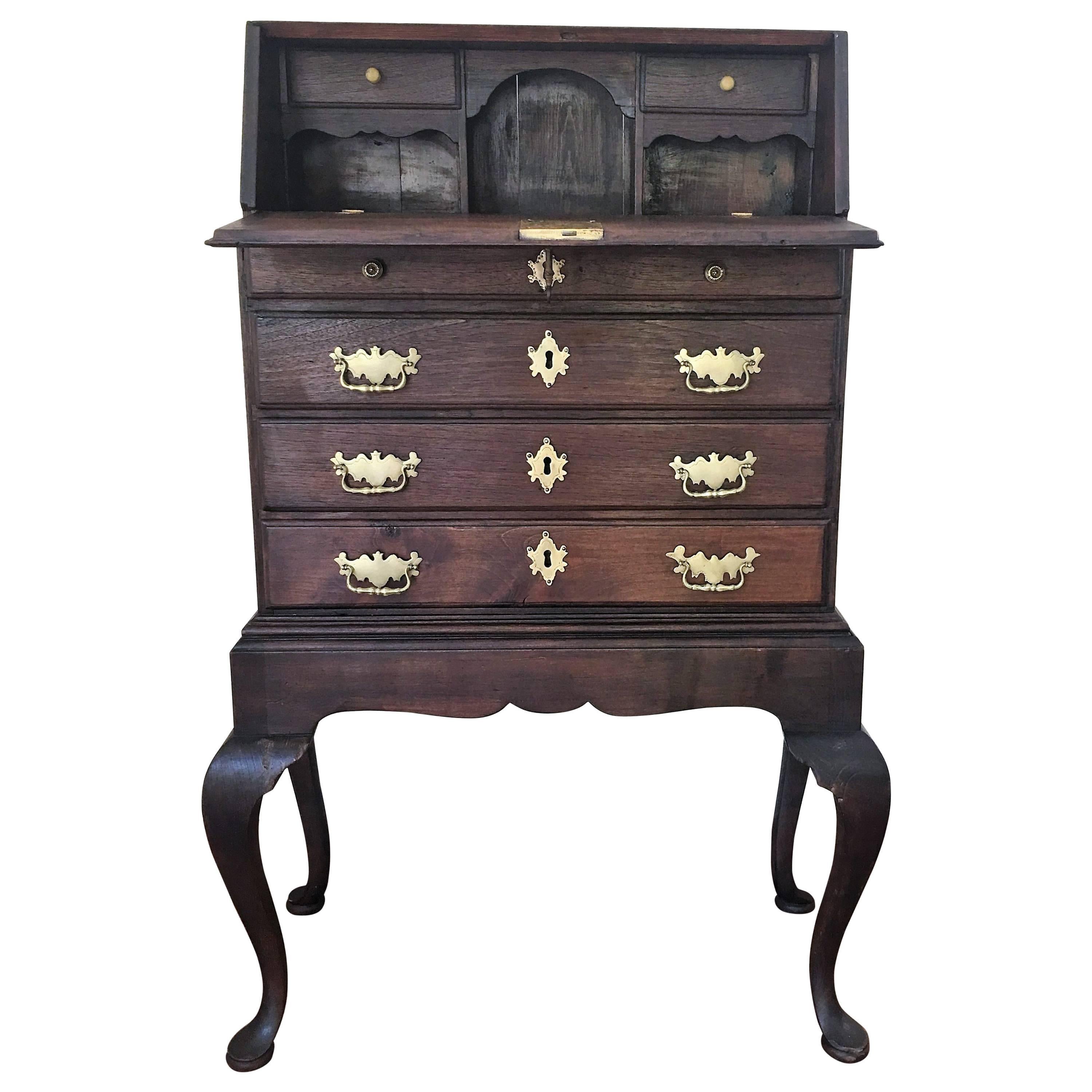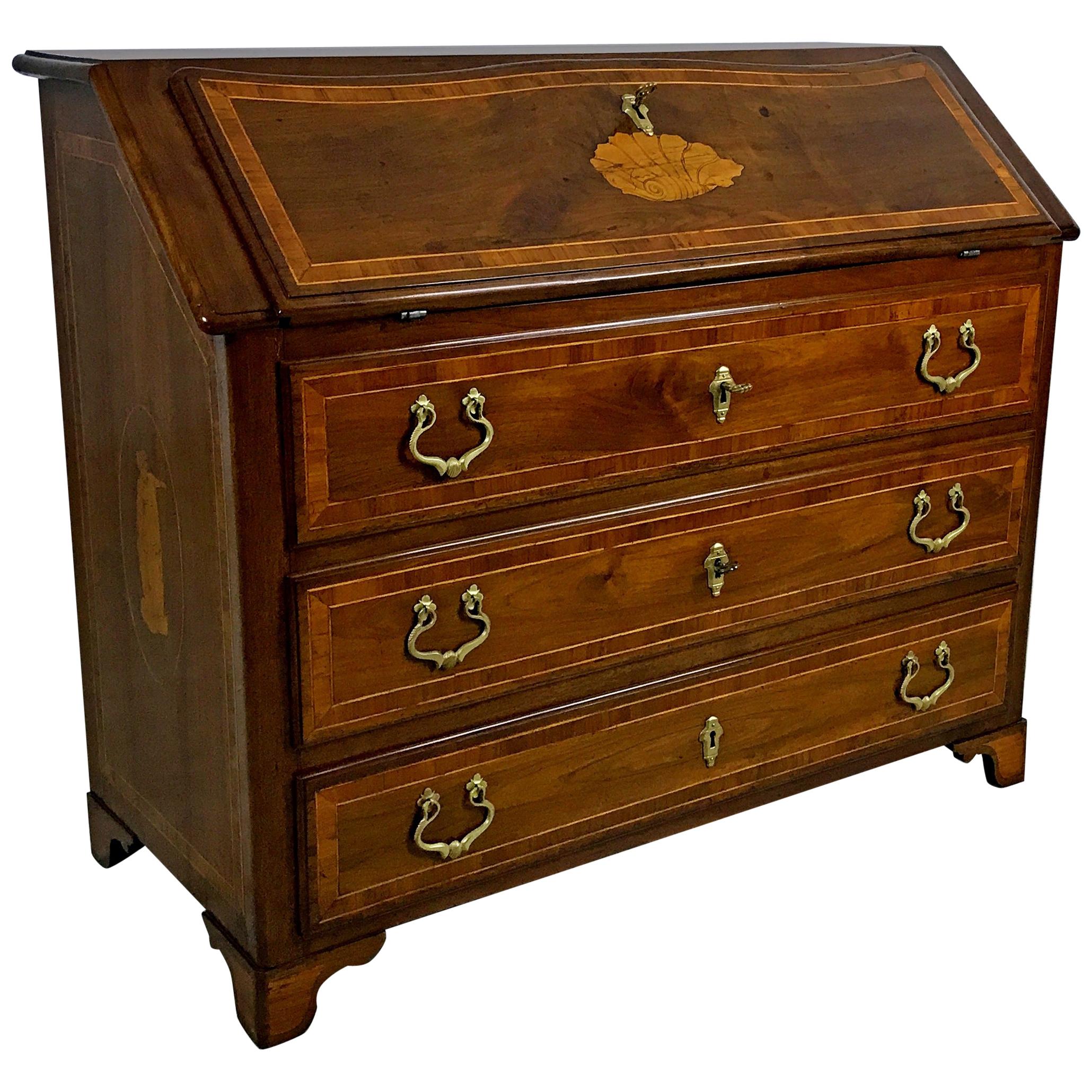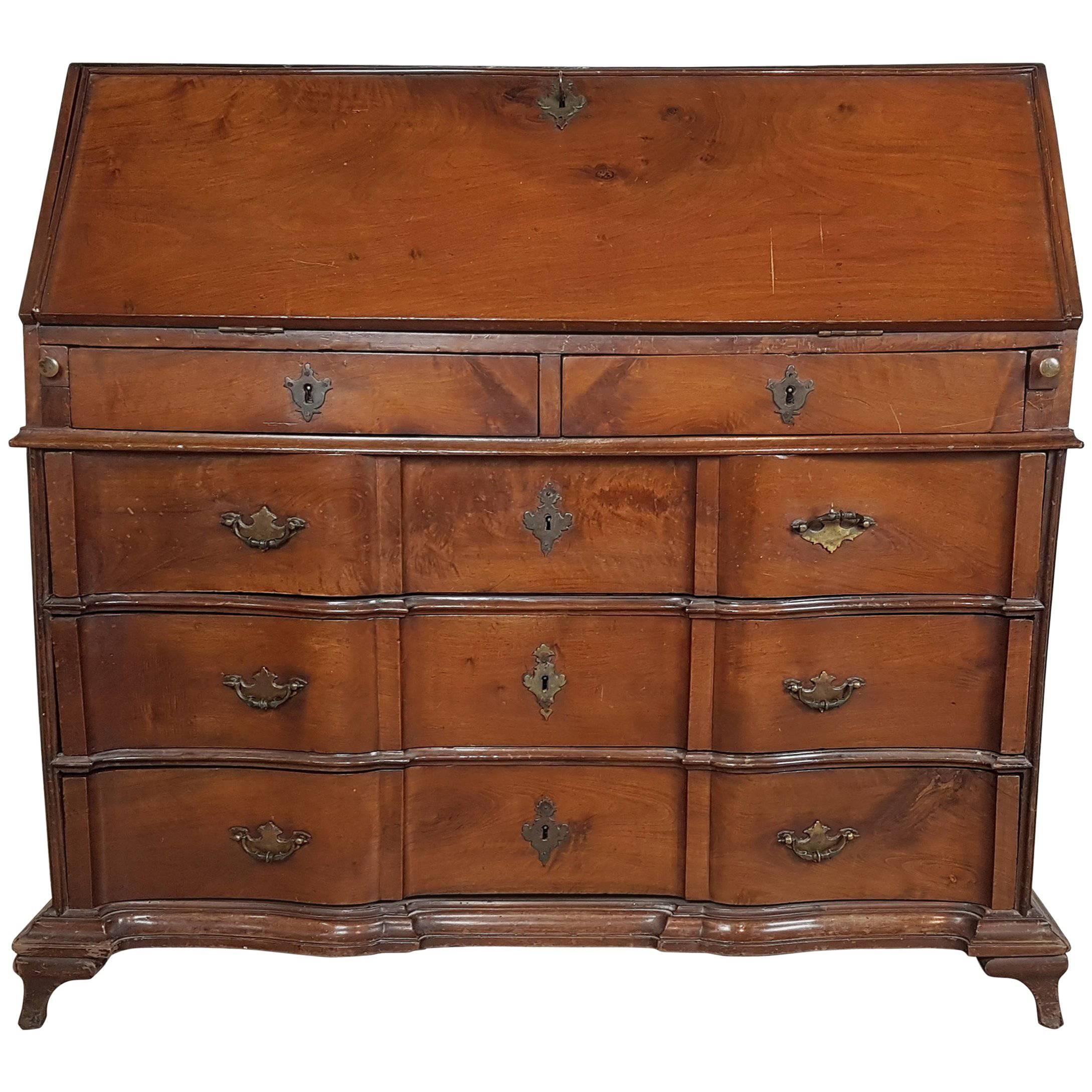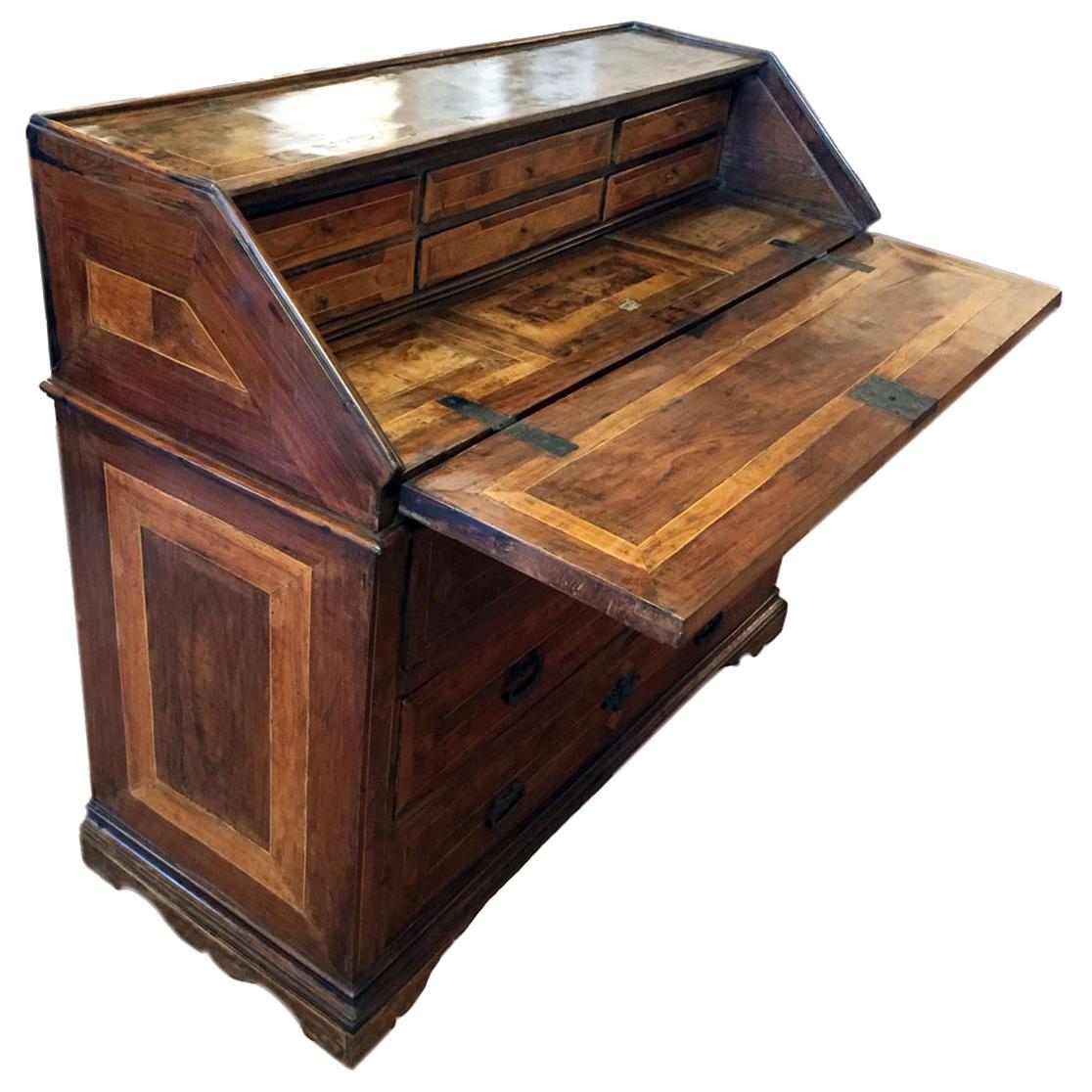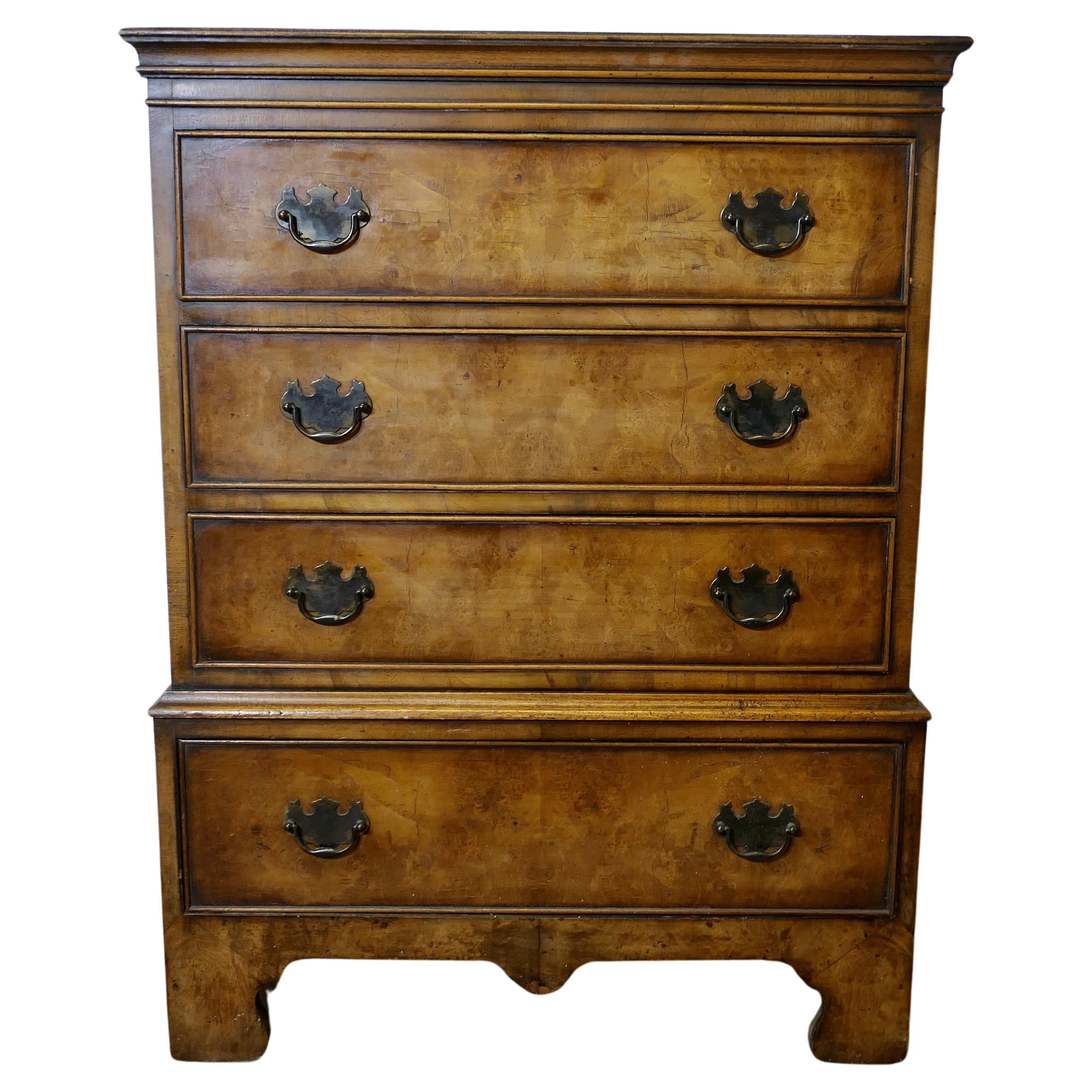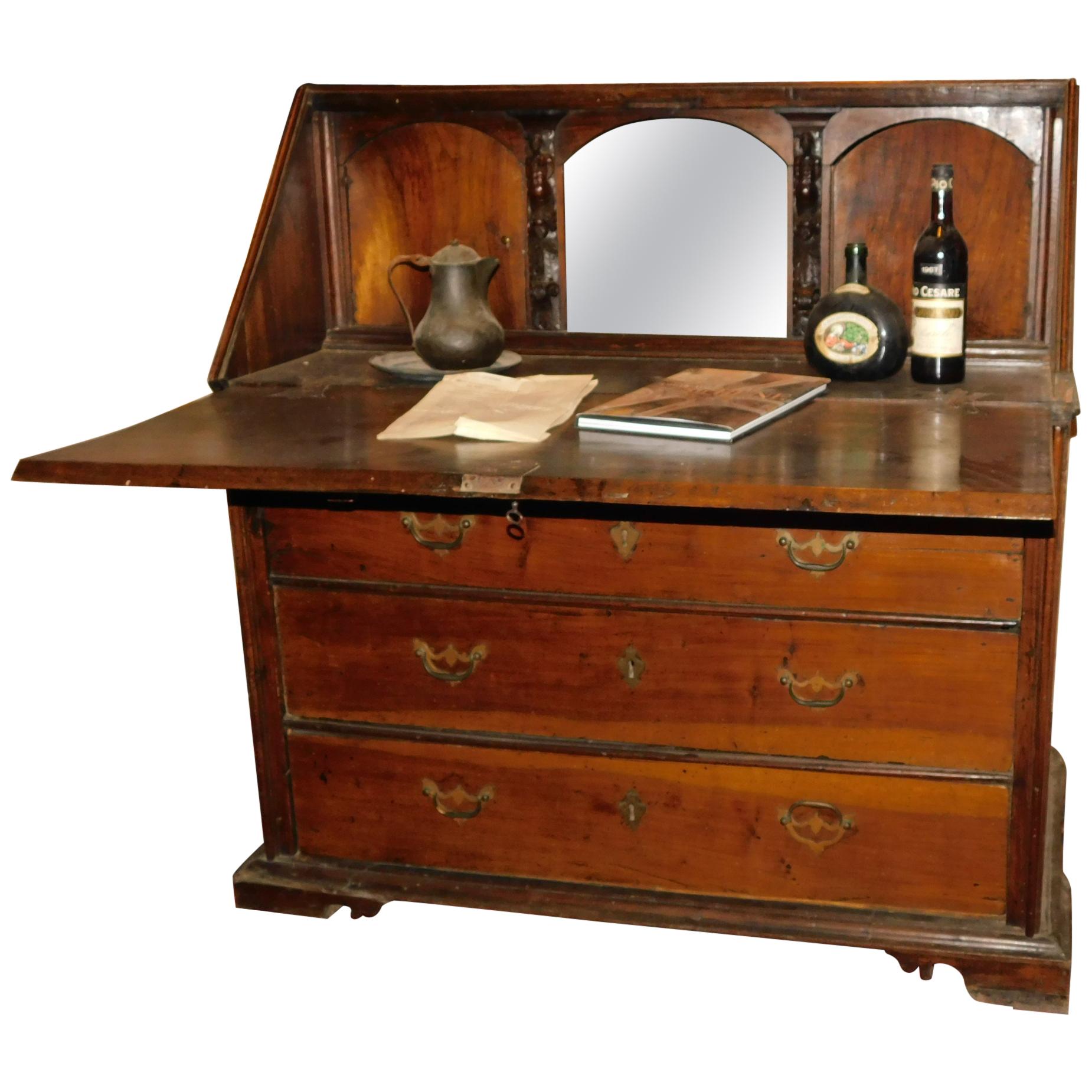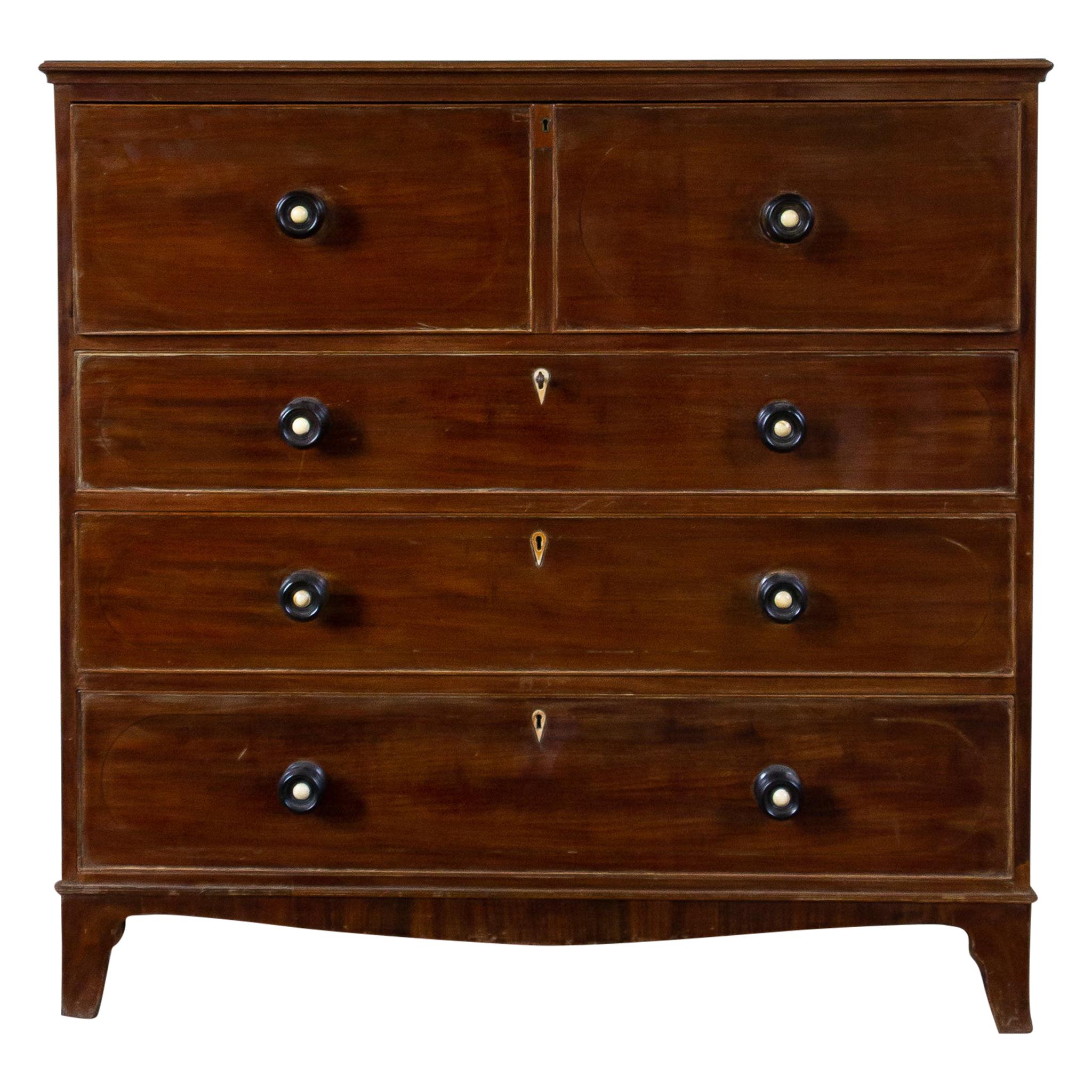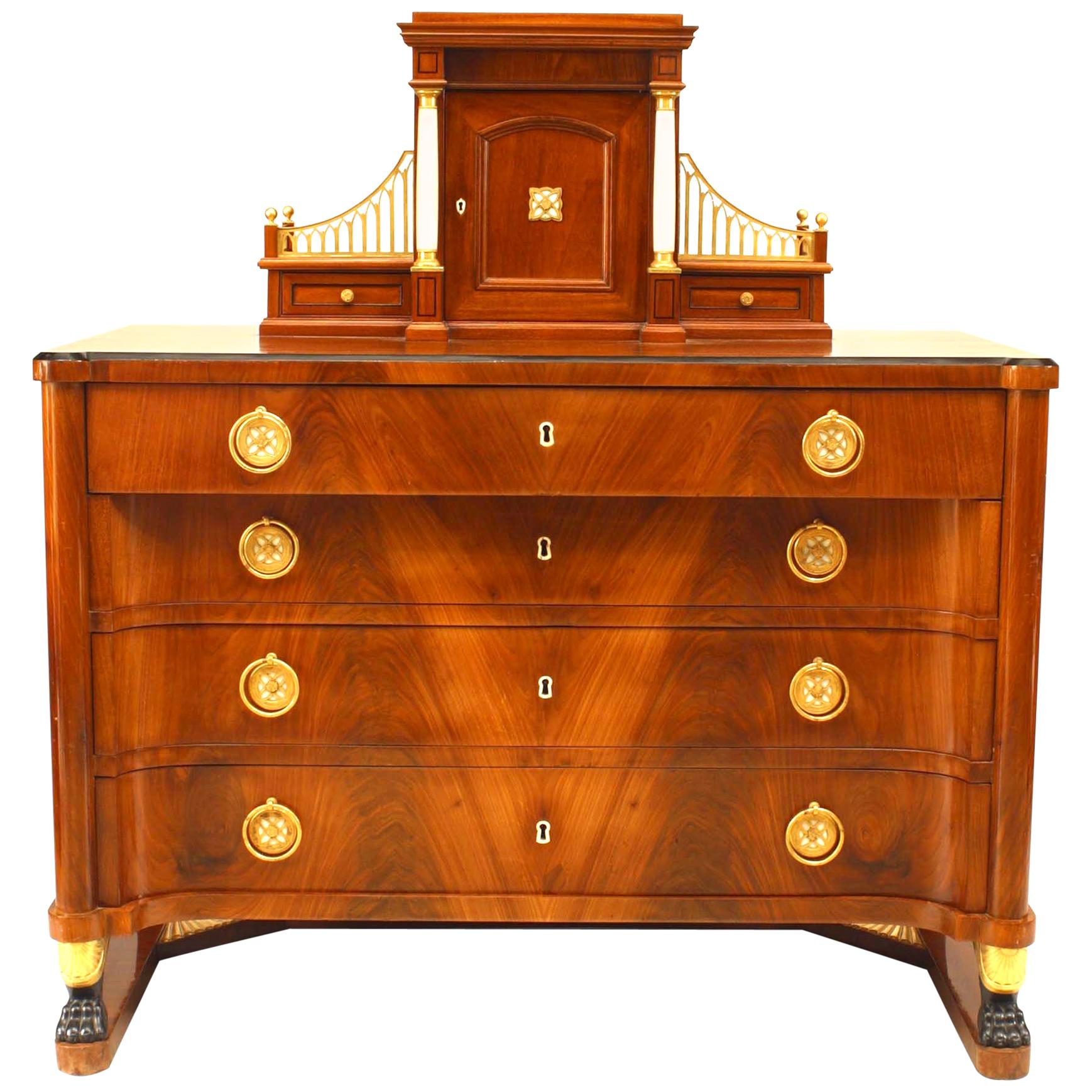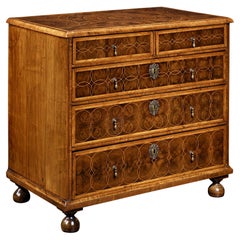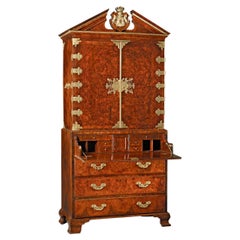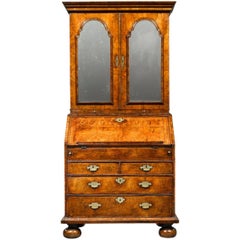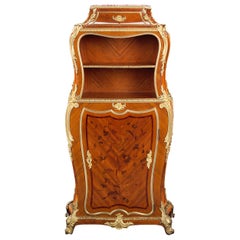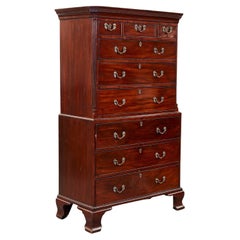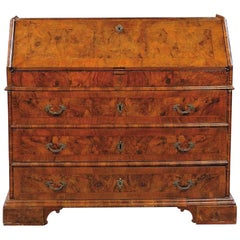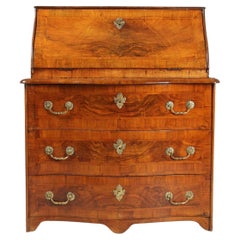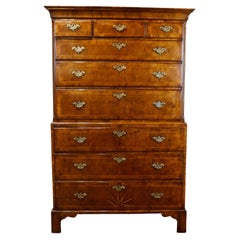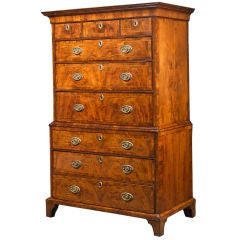
Georgian Walnut Chest on Chest
View Similar Items
Want more images or videos?
Request additional images or videos from the seller
1 of 5
Georgian Walnut Chest on Chest
About the Item
The chest's decorative features are also exquisite, particularly the reeded canted corners, molded cornice and bracket feet. Constructed in a rare smaller size, characteristic of early examples, this piece exhibits outstanding craftsmanship and superior design. Walnut chest on chests are considered the most desirable, followed by those crafted of mahogany and then oak. Similar chests are featured in British Antique Furniture: Price Guide and Reasons for Values.
The chest on chest was introduced early in the 18th century. Also known as the tallboy, it served as the wardrobe of the 18th century. Tallboys eventually gave place to the modern type of wardrobe, which, with its sliding doors, was found to give easier and more convenient access than the exceedingly tall chest. The topmost drawers of the tallboy could only be reached by the use of bed steps, and the disappearance of high beds and the consequent disuse of steps exercised a certain influence in displacing a characteristic piece of furniture that was popular for at least a century. The early examples are walnut, but by far the largest portion of the many that have survived are mahogany, this being the wood most frequently employed in the 18th century for the construction of furniture, especially the more massive pieces. To find a walnut chest of such exceptional quality is truly rare.
- Dimensions:Height: 66 in (167.64 cm)Width: 42.25 in (107.32 cm)Depth: 21 in (53.34 cm)
- Place of Origin:
- Period:
- Date of Manufacture:Circa 1725
- Condition:
- Seller Location:New Orleans, LA
- Reference Number:Seller: 29-47081stDibs: U100420891119
About the Seller
5.0
Recognized Seller
These prestigious sellers are industry leaders and represent the highest echelon for item quality and design.
Established in 1912
1stDibs seller since 2010
106 sales on 1stDibs
Typical response time: 4 hours
Authenticity Guarantee
In the unlikely event there’s an issue with an item’s authenticity, contact us within 1 year for a full refund. DetailsMoney-Back Guarantee
If your item is not as described, is damaged in transit, or does not arrive, contact us within 7 days for a full refund. Details24-Hour Cancellation
You have a 24-hour grace period in which to reconsider your purchase, with no questions asked.Vetted Professional Sellers
Our world-class sellers must adhere to strict standards for service and quality, maintaining the integrity of our listings.Price-Match Guarantee
If you find that a seller listed the same item for a lower price elsewhere, we’ll match it.Trusted Global Delivery
Our best-in-class carrier network provides specialized shipping options worldwide, including custom delivery.More From This Seller
View AllWilliam and Mary Oysterwood Chest
Located in New Orleans, LA
This William and Mary-period chest is distinguished by oyster veneering and circular inlay. Intersecting circles are inlaid into the veneers on the drawer fronts and on top of the ch...
Category
Antique 17th Century English William and Mary Commodes and Chests of Dra...
Materials
Bronze
King George I Ambassadorial Secrétaire-Cabinet
Located in New Orleans, LA
This highly important secrétaire-cabinet was crafted for and specially ordered by King George I for the British Ambassador to Russia. From its craftsmanship and materials to its exceptional artistry, it is a work of royal and historic significance that exudes power in each and every detail. The broken pediment at its apex features the simplified royal coat of arms bearing the king’s crown, while the interior is adorned by portraits of the British Royal Family. Placed within the ambassador’s St. Petersburg home, this entirely unique piece of furniture would have been a potent reminder of England's grandeur and political importance.
Relations between England and Russia during this period were at an all-time high. Peter the Great had traveled to England in 1698 as part of his widely known “Grand Embassy” tour, wherein he attempted to gain foreign support against the Ottoman Empire. He spent a period of nearly four months there, meeting with King William III and his court on numerous occasions. Noted academic Arthur MacGregor wrote concerning the impact of the trip, “For two decades following Peter's visit, British influence in Russia reached a peak. It manifested itself in social custom, in craft practice and in ships and naval organization... it reached a significant sector of the population before relations cooled once again and the two nations pulled back from this era of unprecedented cordiality.”
First and foremost, however, it is a reminder of British might and influence. By the reign of King George I, England had come into its own as a world power. Unique in its design, this cabinet is a reflection of the country’s might. It is crafted from the highest-quality solid walnut and burr walnut adorned by gilded lock plates and engraved hinges. The presence of ormolu at its apex and lining the doors was a rarity for this period, and its addition makes manifest the importance of the design.
The outer doors open to reveal multiple interiors, including fifteen separate drawers around a central cupboard; the cupboard doors each bear mezzotint portraits of George I and his father, Ernest Augustus, Elector of Hanover. An etching after the portrait of George I dating to circa 1716 is in London’s Royal Academy. A second, inner pair of doors are adorned by mezzotints of the Prince and Princess of Wales (later Queen Caroline and George II), which are both after portraits by Sir Godfrey Kneller dated 1716 in the Royal Collection. A final portrait is revealed on the very interior of the cabinet, where a mezzotint of Frederick, Anne, Amelia and Caroline, children of the Prince of Wales, resides. An etching (circa 1715-1720) after this portrait can be found in the National Portrait Gallery (London).
Apart from its abundance of royal portraiture, the cabinet features stunning painted decoration, including floral designs as well as clouds, birds and trees in a bucolic motif reminiscent of Eden. Its lower portion is a study in both form and function, featuring a fitted secrétaire-drawer above three additional drawers for storage. The cabinet appears in The Shorter Dictionary of English Furniture by R. Edwards from 1964, a text that is regarded as the bible of British furniture design. Edwards describes it as a “writing cabinet...given by George I to the British Ambassador at the Russian court.”
The cabinet was likely made for the 18th-century German diplomat and writer Friedrich Christian Weber, who represented English interests at the Russian court from 1714 until 1719. Although Weber’s tenure as ambassador was relatively short, while in St. Petersburg, he authored his account entitled Das veraenderte Russland (The Present State of Russia), which was published in three volumes in 1721, 1739 and 1740. It may, however, also have been made for George Douglas, 2nd Earl of Dumbarton, who served as ambassador alongside Weber in 1716. Diplomatic relations ceased between the two countries in 1721.
In 1928, the cabinet appeared for sale at the International Exhibition of Antiques & Works of Art in Olympia. It had previously been in the collection of the Woltner family of Bordeaux, the celebrated vintners who owned the estate Château Laville Haut-Brion and produced wine of the same name. According to the family, Monsieur Woltner was given the cabinet as a gift from an aunt who lived in Russia for many years. After leaving the Woltner collection, the cabinet was acquired by William Berry...
Category
Antique 18th Century English Georgian Secretaires
Materials
Brass
18th Century English Secretary
Located in New Orleans, LA
Queen Anne period furnishings such as this walnut secretary are incredibly rare and important examples of English cabinetmaking. This secretary is of the most outstanding caliber, boasting desirable double bonnet, mirrored cabinet doors...
Category
Antique 18th Century English Queen Anne Secretaires
Materials
Walnut
19th Century French Secrétaire by Durand
By Gervais Durand
Located in New Orleans, LA
Superior craftsmanship and intricate marquetry characterize this rare secrétaire by Gervais-Maximilien-Eugène Durand, one of the most popular French ébénistes of the 19th century. Th...
Category
Antique 19th Century French Louis XV Secretaires
Materials
Bronze, Ormolu
George III Chippendale-Period Serpentine Commode
By Thomas Chippendale
Located in New Orleans, LA
This rare 18th-century serpentine chest of drawers was crafted in the style of the iconic Thomas Chippendale. The George III mahogany dresser is complete with its original brass hand...
Category
Antique 18th Century English Chippendale Commodes and Chests of Drawers
Materials
Brass
The Royal Boulle Marquetry Commode By Blake
By Robert Blake
Located in New Orleans, LA
This monumental Boulle commode was crafted by Robert Blake, one of the finest and most important English cabinetmakers of his time. It is modeled after the legendary pair of commodes...
Category
Antique 19th Century English Louis XIV Commodes and Chests of Drawers
Materials
Bronze, Ormolu
You May Also Like
George III Mahogany Chest on Chest
Located in Greenwich, CT
Fine Georgian period mahogany chest on chest, the dentil molded top with reeded canted corners having three short and three wide drawers over lower section having secretary drawer an...
Category
Antique 1770s English George III Commodes and Chests of Drawers
Materials
Mahogany, Oak, Pine
18th Century, Italian Walnut Wood Bureau Chest of Drawer
Located in IT
18th century, Italian walnut wood bureau chest of drawer
This bureau chest of drawer was made in Emilia, in Italy, at the beginning of the 18th century. The structure is entirely paved in the precious wood essence of walnut and walnut root. The upper portion has a door that opens to the fore to show inside a compartment divided into six drawers. There is also a secret, which is fulfilled by running the support plan.
The front then has three drawers equipped with door locks and handles in chiseled bronze.
The cabinet rests on a band that front is interrupted to create two feet, a feature that gives elegance and lightness to the compositional line.
The walnut veneer is applied playing on the different designs of the wood and this gives the furniture a refined chromatic effect of great decorative.
This flap is suitable to be inserted in different environments of your home is combined with antique furniture in...
Category
Antique Early 18th Century Italian Louis XV Commodes and Chests of Drawers
Materials
Bronze
$15,258 Sale Price
20% Off
Small Swiss Louis XV Secretaire, Walnut, Writing Chest, circa 1760
Located in Greven, DE
SmallLouis XV or Baroque Secretary
Switzerland (Bern)
Walnut
Baroque around 1760.
Dimensions: H x W x D: 109 x 93 x 60 cm
Description:
Writing furniture standing on a ...
Category
Antique Mid-18th Century Swiss Louis XV Secretaires
Materials
Walnut
Georgian Walnut & Oak Chest on Chest
Located in Woodbury, CT
Georgian walnut and oak chest on chest. Upper section consists of three over three graduated drawers, reeded chamfered corners and deep crown moulding. Bottom section stands on bra...
Category
Antique 18th Century English George II Commodes and Chests of Drawers
Materials
Oak, Walnut, Ebony, Satinwood
Early 19th Century Georgian Style Walnut and Burr Secretary Desk or Vanity
Located in Miami, FL
Early 19th century Georgian style walnut and burr secretary desk, vanity or chest with four drawers and two interior drawers in the desk.
Category
Early 20th Century English Georgian Commodes and Chests of Drawers
Materials
Walnut
Italian Inlaid and Solid Walnut Wood Chest of drawers with Secretaire
Located in IT
18th century, Italian inlaid and solid walnut wood chest of drawers with secretaire
This chest of drawers with secretaire was made in...
Category
Antique Mid-18th Century Italian Louis XV Commodes and Chests of Drawers
Materials
Bronze
$7,860 Sale Price
20% Off
Recently Viewed
View AllMore Ways To Browse
Bed Steps
Steps For Bed
Full Size Bed Mahogany
18th Century Tallboy
Bed Cornice
British Modern Chest Of Drawers
18th Century British Chests Of Drawers
Georgian Tallboy
Antique Bed Steps
Georgian Mahogany Wardrobes
Antique Oak Full Size Bed
Early Georgian Wardrobe
Georgian Mahogany Tallboy
Mahogany Bed Steps
Walnut Tallboy 18th Century
Tallboy Wardrobe
Georgian Walnut Tallboy
Antique Mahogany Beds Full Size
